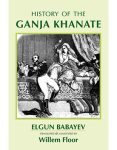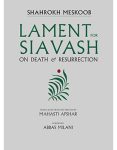About the Book
Salar al-Dowleh, the madcap prince and serial rebel, was a reflection of the unsettled political times during the early 1900s when Iranian society was trying to find its way toward a more democratic society. This is also clear from Salar al-Dowleh’s “career.” He was first courted by the democrats, when they ditched him, he tried to court them but when his nephew was enthroned instead of him, he joined the reactionary forces. As a serial rebel Salar al-Dowleh was a failure, because he did not have a program (apart from killing and plundering) that supporters could believe in. In fact, his rebellions had no other cause than himself. Salar al-Dowleh told each audience what it wanted to hear. He passed himself off as a constitutionalist, a nationalist, an anti-Russian, a pro-Russian, an anti-British, a pro-British, an Islamist, and anything else. He was an uncaring and rapacious governor and a murderous, destructive, plundering rebel, who did not care about the harm and misery he inflicted on his country and his countrymen. After his final ouster from Iran in 1913, driven by financial need, Salar al-Dowleh again tried to play a role in Iranian politics in 1914, 1918, 1924, 1925 and 1926. He was not successful in any of these and was finally exiled by the British to Haifa (1927-1936). When his Iranian pension was stopped, he moved to Alexandria (1936-1959), where he died, a forgotten man. For those interested in Iranian history, the rebellions started by the prince are as important to study as the political debates in the Majles–they both arose from the same unresolved dynastic, political, social, and economic conflicts in Iranian society during that turbulent period.
Reviews
Coming Soon
Excerpt
Contents
introduction ix
a rapacious governor 1
his first rebellion (1904) 5
his second rebellion (1907) 6
flirts with reformers to become heir-apparent 7
refuses to give up governorship of lorestan and rebels 10
plunders the nehavand-hamadan region 13
shah offers his brother life and pardon 14
salar al-dowleh defeated, interned and exiled 18
His Third Rebellion (1910-12) 23
supports the ex-shah’s bid to regain the throne 23
salar al-dowleh takes senneh and kermanshah. 25
salar al-dowleh marches toward tehran 28
makes a bid for the throne himself 35
defeated at bagh-e shah 37
despite defeat local supporters hold the initiative 38
takes kermanshah, again 42
yar mohammad khan expels salar al dowleh 47
salar al-dowleh retakes kermanshah 50
russia and britain urge salar al-dowleh to give up 52
defeats government force despite growing quarrels among his tribal supporters 57
salar al-dowleh defeated; death of yeprim khan 59
freedom fighters in government service partly defect,
partly leave 61
salar al-dowleh retakes kermanshah and loses it again 64
salar al-dowleh and yar mohammad khan try to
retake kermanshah 69
Salar al-Dowleh’s Khorasan and Caspian
Adventure (1912-13) 72
flees to astarabad and calls on turkmen support 72
defeated at shahrud, seeks turkmen support and
deal with tehran 74
goes on looting spree; endangers deal with tehran 79
salar al-dowleh invades and plunders mazandaran 85
marches to rasht, defeated at tonkabon, flees to kurdistan 88
Movements in Kurdistan and Kermanshah
and Exile (July-September 1913) 92
Salar al-Dowleh’s Alleged Activities
During WW I 105
germany accepts the help he offered 105
recalled from khaneqin (february 1915); rumors about
his return 109
A Failed Second Caspian Adventure (end 1918)
and Exile 114
Salar al-Dowleh and Khuzestan (1924) 119
Incursion From Iraq (mid-1925) 122
intrigue in damascus and financial problems 122
salar al-dowleh goes to kurdistan (april 1925) 127
tries to foment uprising in khuzestan and fails to
reach kermanshah 131
flees, is captured and exiled to syria 133
Last Incursion From Iraq (mid-1926) 137
Preparation and Goes Undetected to Kurdistan (June 1926) 137
marches on senneh and is defeated 139
general belief in iran that salar al-dowleh was
a british stooge 145
salar al dowleh’s capture 149
continued suspicion about british involvement 151
Where to Send Salar al-Dowleh? 153
Residence in Haifa (1926-34) 157
Iran Stops Payment of Salar al-Dowleh’s
Pension (June 1933) 163
Residence in Alexandria (1936-59) 169
Assessment 172
Appendix I 181
salar al-dowleh’s wives and children 181
Appendix II 183
letters salar al-dowleh to british king and british
minister in tehran (20/06/1920) 183
Appendix III 185
salar al-dowleh’s letter to british consul in kermanshah 26 march 1911 185
Appendix IV 190
petition of the bastis to british consul, kermanshah
26 September 1912 190
Annex V 191
salar al-dowleh’s debts in switzerland, 1925 191
Appendix VI 192
salar al-dowleh’s letter to his wife helen,
3 september 1925 192
Appendix VII 194
extracted from the shafaghi sorkh, 16 august 1926. 194
Appendix VIII 197
report of the contents salar al dowleh’s captured bag,
12 september 1926 197
Appendix IX 199
letter from an egyptian air officer to
salar al-dowleh 20 october 1926 199
Appendix X 203
salar al-dowleh’s letter to his son majid
8 november 1926 203
Annex XI 204
gouverneur-geneneral du district du nord, haifa
3 november 1933 204
Annex XII 207
al-ahram article about salar al-dowleh, 1936 207
Bibliography 209
archives 209
national archives, kew gardens, london, uk 209
british library/india office, london, uk. 210
books and articles 211
Index 216
About the Author
Willem Floor studied development economics and non-western sociology, as well as Persian, Arabic and Islamology from 1963-67 at the University of Utrecht (the Netherlands). He received his doctoral degree from the University of Leiden in 1971. Since 1983, Dr. Floor was employed by the World Bank as an energy specialist, however, after his retirement in 2002, he has dedicated his time to the study of the social and political history of Iran, and has published extensively throughout this time. His books include: Public Health in Qajar Iran, Agriculture in Qajar Iran, and The History of Theater in Iran, as well as, The Persian Gulf: A Political and Economic History of 5 Port Cities, 1500-1730, its second volume, Persian Gulf: The Rise of the Gulf Arabs, 1747-1792, third volume, The Rise and Fall of Bandar-e Lengeh, the fourth volume, Bandar Abbas: The Natural Gateway of Southeast Iran, and the fifth volume, The Persian Gulf: Links with the Hinterland Bushehr, Borazjan, Kazerun, Banu Ka’b, & Bandar Abbas, The Persian Gulf: The Hula Arabs of The Shibkuh Coast of Iran, and The Persian Gulf: Dutch-Omani Relations A Commercial & Political History 1651-1806, and The Persian Gulf: Muscat – City, Society and Trade . He has also published, Travels Through Northern Persia, 1770-1774, Titles and Emoluments in Safavid Iran, and A Social History of Sexual Relations in Iran; Labor and Industry in Iran, 1850-1941; Guilds, Merchants and Ulama in 19th Century Iran; The Rise and Fall of Nader Shah; Games Persians Play, and History of Bread in Iran. His translations include: Samuel Gottlieb Gmelin’s Travels Through Northern Persia 1770–1774 , and with Hasan Javadi, Abbas Qoli Aqa Bakikhanov’s The Heavenly Rose-Garden: A History of Shirvan & Daghestan; Evliya Chelebi’s Travels in Iran and the Caucasus, 1647 and 1654; A Man of Two Worlds: Pedros Bedik in Iran, 1670–1675, Awake: A Moslem Woman’s Rare Memoir of Her Life and Partnership with the Editor of Molla Nasreddin, the Most Influential Satirical Journal of the Caucasus and Iran, 1907–1931, and Engelbert Kaempfer: Exotic Attractions in Persia, 1684–1688: Travels & Observations.








